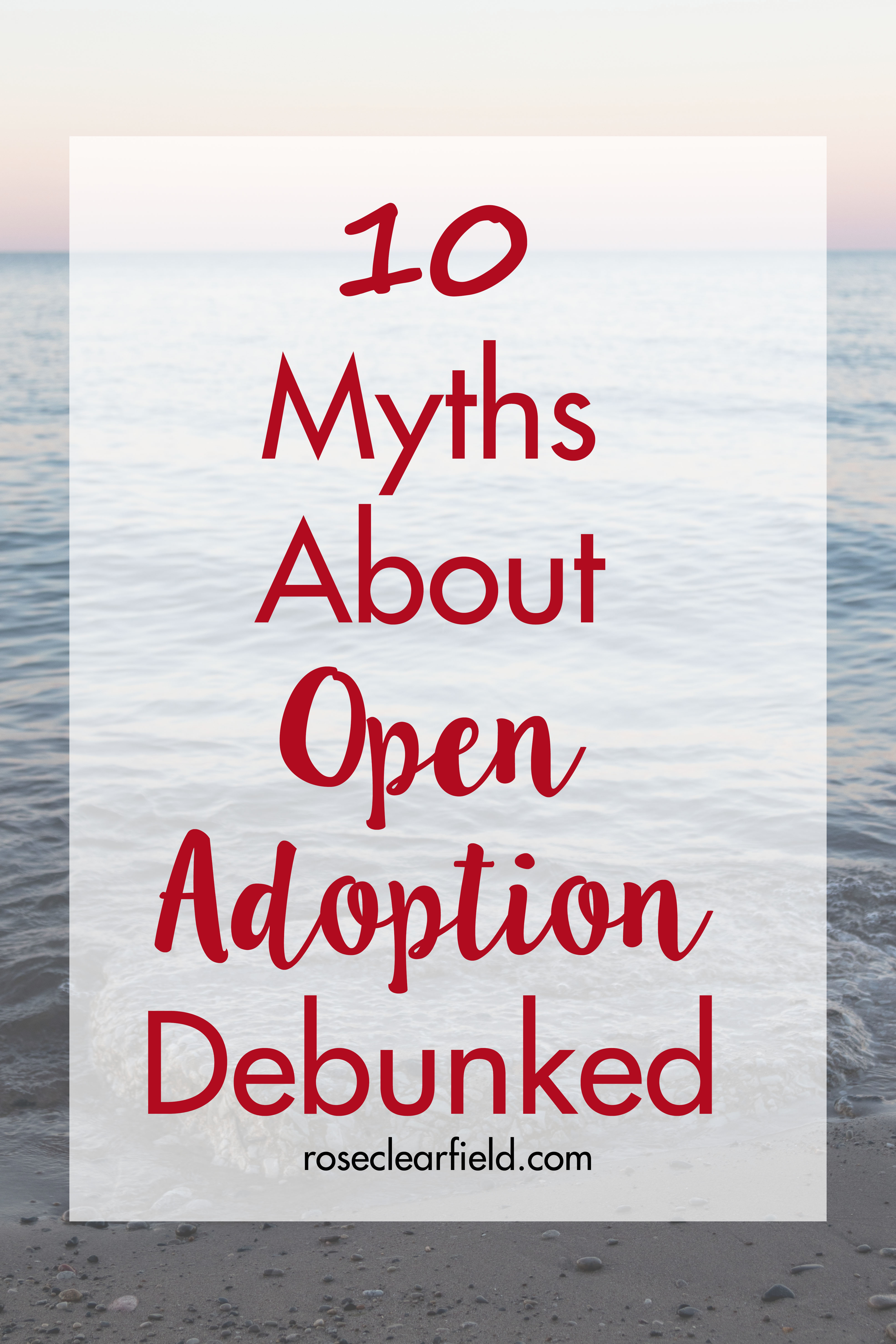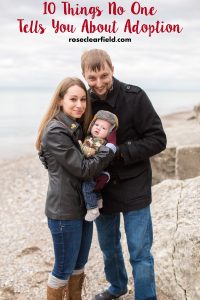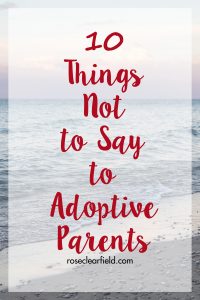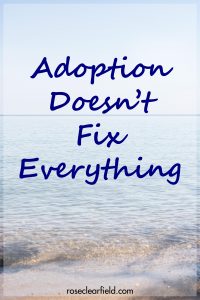I’ll be honest: when my husband and I began the adoption process, we never imagined that we’d have an open adoption that went beyond sending monthly updates and pictures via email and visiting occasionally. I don’t discuss our relationship with Tommy’s birth family in much detail publicly to protect their privacy. But it’s an important part of our lives and involves a lot more contact than what I just described. As such, I’ve fielded a lot of questions addressing myths about open adoption and will continue to do so. I’m debunking 10 of the most common myths about open adoption.
1. Open adoption confuses children.
The single biggest myth about open adoption seems to be that it confuses children. This concept blows my mind because I’ve absolutely never heard a case where open adoption confused children. Even very young kids understand who their parents are and the role that their parents fulfill for them. As birth families play a very different role in adopted children’s lives, there’s no confusion about these roles. Most adoptive families use language such as “birth family” or “first family” to refer to their child’s birth relatives to avoid any potential confusion with their adopted kids as well as friends and family.
2. Open adoption increases the risk of birth families trying to take back adopted children.
Thanks to cheesy Hallmark and Lifetime movies and all of the other pop culture that paints a blatantly false picture of adoption, people truly believe that open adoption compromises an adoptive family’s rights and safety. In short, it doesn’t. Adoptive families in open relationships have exactly the same legal rights as adoptive families in closed relationships. I’m sure that there are occasional instances of birth families kidnapping adopted children, but it’s extremely rare. In the event that it does happen, it’s considered kidnapping and is treated as such.
3. Birth families don’t matter and as such, don’t deserve an open adoption.
Birth families are some of the strongest people I know. There aren’t words that adequately describe the strength that goes into the decision to put up a child for adoption and then have that child as part of their lives through open adoption. This decision is made out of nothing but love for the child and the future they desire for him/her. On the flip side, birth families allow adoptive parents to become parents and grow their families. There isn’t a day that goes by that an adoptive family isn’t grateful for the sacrifices that their birth families made for them. To say that birth families don’t matter belittles this entire relationship.
4. Open adoption is a type of co-parenting.
Similiar to the concern about open adoption confusing children, I’m not sure how people even begin to believe that there are open adoptions where the families co-parent. Adoptive parents don’t seek out open relationships with birth families so they can co-parent with them. In turn, birth parents don’t seek out open relationships with adoptive families because they see it as an opportunity to co-parent. Both families understand their roles in the relationship. Many birth families are extremely grateful to be in the adoptees’ lives and wouldn’t dream of trying to step on the adoptive parents’ toes.
5. Adopted children will feel as though they have to choose between their adopted family and their birth family.
When adoptive families approach open adoption from a healthy perspective (and most do), adoptees will never have to choose between their adopted family and birth family. Again, in the vast majority of circumstances, both parties understand their role in the relationship and will work together to support the child. Inevitably, there will be occasional conflict, challenge, jealousy, and hurt feelings. The same is true in any family dynamic. Working through these issues together is a natural part of the relationship.
6. Most adopted families regret the decision to have an open adoption.
Typically, neither an adoptive family nor a birth family enters the adoption process with a clear idea of what open adoption will look like. It’s natural to be apprehensive about the process, especially in the beginning when it’s all unfamiliar and you don’t know each other very well. As adoptive families get to know birth families and see the relationship that their children form with them, they quickly understand the importance of open adoption. As in any relationship, there will be seasons where open adoption is tough. This doesn’t mean that it isn’t worth it.
7. Open adoption increases the risk that adopted children will want to go live with their birth families someday.
I don’t know any kid, biological or adopted, who hasn’t expressed a desire to live with another family member, friend, etc. at some point. Parents drive you crazy. And the grass is always greener. When the going gets tough, living with someone else looks great. Yes, if a birth family is in an adopted family’s life, an adoptee may make this threat. There are virtually no circumstances where an adopted child actually goes to live with a birth family.
8. Adoptive families benefit from open adoption relationships, not birth families.
Both adoptive and birth families benefit from open adoptions. Needless to say, this relationship helps provide answers to numerous questions for adopted families. As an adopted parent, being able to answer these questions for your child is one of the greatest gifts you’ll ever be able to give them. With that being said, open adoption relationships answer a lot of questions for birth families, too. They also provide a huge peace of mind.
9. Open adoption relationships eventually fall apart.
Over time, relationships develop and change. Expecting an open relationship to look exactly the same over the course of an adoptee’s life simply isn’t realistic. It’s natural for people to grow closer or further apart or to have varying life circumstances that prevent them from seeing each other as often as they once did (new job, illness), etc. An adoptee will also go through natural periods where he/she is or isn’t especially close with his/her birth family. Through high school and college years, many kids would rather make time to go out with their friends than their family, which includes their birth family.
10. Open adoption is the right decision for every adopted family-birth family relationship.
Even with all the benefits of open adoption, it isn’t the right decision for every adoptive family. Certain circumstances in a birth parent’s life (i.e., in prison, substance abuse) may not make it beneficial for adopted children to spend time with their birth families. Many birth parents and adoptive parents simply aren’t comfortable with an open relationship. It’s important for both parties to be comfortable with the relationship for it go well. Additionally, not all adoptees desire to know their birth families. This may be tough for their adopted parents and birth families. However, ultimately, it’s adoptees’ decision, especially as they get older.
[Disclaimer: The above book links are affiliate links. Thanks for your support!]
Adoptive parents, as always I’d love your input!
What other common myths about open adoption have you encountered?
Leave me a comment with your insight!
More adoption resources:
10 Things No One Tells You About Adoption
10 Things Not to Say to Adoptive Parents




